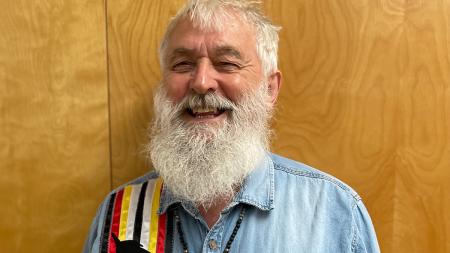Thrive Hosts Creative Worship Listening Session

On May 21, members of several CRC congregations in West Michigan gathered for a listening session to explore ways in which they could engage in corporate worship without relying on words.
Worship leaders, pastors, visual-arts teams, dancers, disability advocates, and other church leaders from five regional classes attended the event and learned from one another how they might enrich and expand their worship services in accessible ways.
“Worship often leans heavily on words,” noted Lindsay Wieland Capel, disability consultant for Thrive. “Reading words, speaking words, preaching words, exchanging words – but for some, words can be a barrier to full participation.”
This could include people who have difficulty seeing and reading words on a screen, or hearing them when they are spoken. It also includes members who are nonverbal, have cognitive disabilities, or have varying sensory needs.
“We wanted to pose the question ‘How might we engage the senses through creative and vibrant worship practices that foster worship spaces to welcome and enliven Spirit-filled participation?’” explained Wieland Capel.
To do this, Wieland Capel partnered with Katie Roelofs, Thrive worship consultant, to plan and host the event. Participants were invited to share nonword-based practices that their church has done in worship, challenges they have experienced, and creative ideas they would like to try.
A wealth of ideas, creativity, and joy from experimentation followed. In small groups the attendees discussed how their own congregations had incorporated visual examples, physical movement, participatory activities, space, art, music, dance, sign language, and other spiritual practices to draw people to God.
Following table discussions, each participant was invited to take their favorite idea and add it to a full-group compilation of practices in each of the following categories: participatory, movement, sound, and visuals. Ideas included providing art supplies, sensory items, handheld musical instruments, and open space to dance. Suggestions ranged from including visual elements for traditionally spoken portions of the service or audio descriptions for traditionally visual elements of worship, to inviting members to touch baptism water and remember their own baptisms, to creating gratitude mosaics using pieces of paper with art or reflections from each member of the congregation.
Participants were then given the opportunity to see what accessibility in ministry can look like in a practical way as they toured the venue of Monroe Community Church. This congregation meets in a renovated industrial building that has been reimagined as a church home and daycare center. As part of its renovation, the church has been intentionally built with Universal Design Principles.
Architect Steve Fridsma, who headed the design project, was present to guide the tour and provide insight into the intentional architectural choices made to increase accessibility in worship.
This event was hosted by Thrive, the congregational support agency of the CRCNA, and the ideas shared will contribute to a larger ecumenical project from the Disability Ministry Network.


